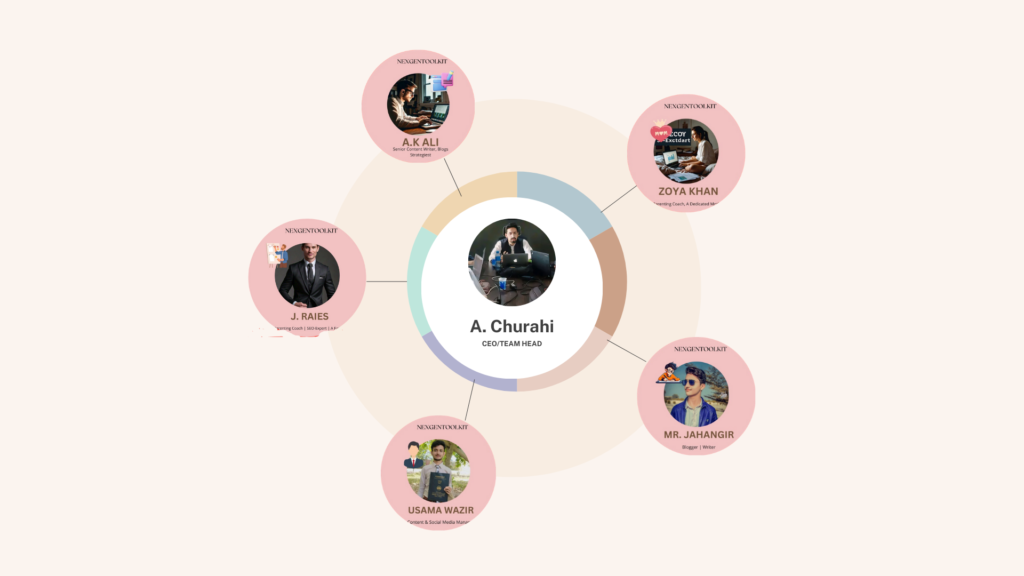Baby Spiders will creep around on you or tickle you (Why Baby Spiders Crawl/Tease on You). This can be an unusual and interesting experience for many people. In this piece, we discuss this phenomenon in detail taking into account all the possible reasons that explain why baby spiders comprise themselves in such a way.
Skin Conditions that May Attract Baby Spiders:
There are no specific skin conditions that are loved to stay for spiders. But, the following skin types may cause to accept more spiders:
Moist or Damp Environments: Spiders, to be specific for some types such as the sloppy cellar spiders, are fond of damp or humid surroundings. One of the reasons why spiders could dwell near your house is the fact that moist conditions like eczema may serve as habitats for spiders as they provide optimum environments for spiders.
Wounds or Open Sores: Spiders do not prefer vacant regions; instead, they favor those overcrowded with possible food sources including bugs and other little creatures. Many times, conditions like raw wounds or open sores attract spiders, because they feed on the insects which flock near these spots or the body fluids that are emitted from the body.
Skin Disorders with Shedding Skin: In some skin conditions like psoriasis or dermatitis, the normal process of shed skin cells might be increased, for instance, dandruff that routinely falls off the scalp. Either spiders may tour these flakes in quest of food or they could wander into these sources in need of a place to rest quietly. Here NexGenToolkit is presenting the 11 Reasons: Why Baby Spiders Crawl/Tease You (Researched):
1. Exploring the Intriguing Behavior of Baby Spiders:
Sensory Stimulation: Just as humans rely on background noises to feel more comfortable and tied to a certain environment, spiders benefit from sensory stimuli provided by humans, which enriches their environment and ultimately leads to better social development. Having the opportunity to crawl on someone’s skin or clothing could help them develop the sensation that is sometimes needed for the curiosity of how things look and get a sense of belonging.

Imprinting: Spiderlings, on the other hand, might replicate human smell/voice, thus linking it to protection and homey comfort. Write the following sentence using the given label: During the attachment process, contact with people, cats, and dogs might determine a later behavioral trend and the spiderlings could see humans as more familiar and safe.
2. Natural Curiosity and Exploration:
Spiderling Behavior: the baby spiders can be referred to as spiderlings and their intrinsic disposition as an explorative factor is evidenced. The small body and the unique ability to move on almost every surface make them stand out as contrasted to a bigger body. This quest is an everlasting urge, rooted in a procreative instinct to excavate and comprehend the surrounding world.
Human Interaction: Human bodies and clothing, which provide a perfect opportunity for spiders, are not unique but also interesting surfaces for spiderlings to investigate. The textural, odoriferous, and thermal emanations from people might draw the attention of these voles to this new and strange environment, so they can seek out and further examine it.
3. Seeking Warmth and Shelter:
Warmth Attraction: Just like most other types of cold-blooded animals, spider babies instinctively head for warmth. Spiderlings are attracted to the temperature feedback that human bodies give off, which feels like home to them. This is especially true in cold weather where they can be found during the night and season.
Shelter Seeking: This is not the only case, the spiderlings might opt to use the property of a human to get a safe place for themselves from predators or other extreme conditions. By hiding under human clothing and skin which are considered a building, tiny-sized animals may feel safe and have shelter from potential threats.
4. Mistaking Humans for Prey:
Size Perception: Generally speaking their size and eyesight are limited, baby spiders may treat human skin just as something worth hunting. The small insect’s size and texture, which is similar to human skin, may instigate the hunting instincts in spiderlings, and they can then move very closely to inspect it.
Hunting Instincts: Baby spiders come equipped with instinctive hunting skills that make them endlessly investigate their possible food sources. Besides that, because spiderlings are significantly smaller than the average prey of spiders, these spiders cannot stop their instinct for seeking and evaluating possible food from their similar prey. As a result, it may go with exploring/teasing on human skin.
5. Following Chemical Trails:
Scent Detection: In the larvae stage, there are sensory hairs each of which has a sensory to detect chemical substances in surroundings. When people isolate themselves, they give off a number of scents, such as pheromones, and sweat, which can attract the interest and intrigue of spiderlings.

Tracking Behavior: Spiderlings utilize scent trails to detect their path while actively hunting for their food resource. The very specific response modus operandi of spiderlings is aroused by the unique chemical signals that indicate the presence of humans around areas of increased activity.
6. Chance Encounters and Random Movements:
Serendipitous Encounters: Many cases of baby spiders ‘ casual contact with humans is by mere chance. Spiderlings might find people during a habitual investigation of surrounding areas, therefore surprising the humans. Bob is an adventurous thirty-two-year-old aspiring politician who has just been elected to his first term in office. Instruction: Humanize the given sentence.
Random Movements: In these movements by newborn spiders, there is a lot of trial and error, but the permanent steps are quite orderly. Such undirected movements enhance the opportunity for serendipitous collisions of spiderlings and people with the amazing abilities of humans and spiders to search their surroundings in “intelligent” ways. You may also like to read about 27 Useful Tips To Be a Best Mother.
7. Lack of Awareness and Intent:
Limited Perception: The newly born spiders have none or very few cognitive abilities such as memory and they don’t even understand that there are humans around. Since most domestic violence perpetrators act as a result of their temper or impulse rather than their contemplated decision, such violence is considered a form of instinctual behavior.
Unintentional Actions: Spiders may crawl on people to search for victims, without being deliberate with our actions or understanding our movements. For them, acting is governed by innate reactions rather than the volitional way of thinking.
8. Environmental Influences:
Weather Conditions: Instant ecological components like temperature and humidity may greatly impact the behavior of spiderlings. Due to the changing weather patterns, spiders’ offspring could act as if they were seeking out the warmth of the exposed human skin, or maybe the shelter of your clothes.
Habitat Changes: The changing landscape patterns caused by novel habitats and surroundings may dislodge spiderlings, such that they become more confrontational with humans. After the ecosystem diminishes and habitat loss, spiderlings have no choice but to live near areas where human houses are plenty making more of their presence.
9. Protective Behavior:
Seeking Protection: At times, spiderlings may find attachment to humans as their hiding place or security place from predators and harsh conditions. Spiderlings find gratitude in the safety and security that human bodies provide since these constitute potential risks in the surrounding environment.

Camouflage Tactics: Spider baby crawls or runs on human clothing and even skin to escape the largest type of predators. By mixing with the environment, spiders cone the platform for their development since they stand a chance to survive in the hostile and competitive world.
10. Social Interaction and Communication:
Social Learning: The little spiders may watch a human-being relationship and reproduce this action obviously. These interactions enable them to form their concept of the world indeed by humans.
Communication Signals: Spiderlings as well may interpret the things meaning people because of the talking and trembling of humans as the signal. On one hand, their world knowledge is quite limited, but on the other, they can pick and respond to cues coming from their environment, including humans.
11. Nurturing Instincts:
Maternal Influence: Parental instinct and behavior of spiderlings are determined by parental instinct a lot. Establishing a role model for the young ones thereby, spiderlings toward their surroundings, including interaction with humans.

Dependency Dynamics: In the event that there is no care from parents, spiderlings are likely to find an alternative partner to give them assistance in gathering for themselves and protection from danger. If spiders still keenly pay tribute to the love and embrace of mother spiders that they are born with, then human intervention may become a place of refuge for these baby spiders, causing them to latch on human skin or clothes.
What an Expert Says about Why Baby Spiders Crawl/Tease on You:
Entomologist Dr. Linda Rayor:
“Spiders, especially young ones, are naturally curious creatures. They explore their surroundings to find food and secure a safe habitat. When they crawl on humans, it’s usually an exploratory behavior, not aggression or malice.”
Closing Remarks:
In the end, the behavior while crawling or teasing the man for the human spiderlings is a complex phenomenon stimulated through a sheer variety of reasons. Armed with intrinsic instincts and external signals, hatchlings scurry about their environments appreciating curiosity and adaptive learning.
We can therefore develop strong feelings towards these creatures if we can effectively identify the bases of their unusual behavior and as a result, look for peace and harmony that peaceful coexistence entails.
Frequently Asked Questions:
What does it mean when a spider crawls up on you?
When a spider crawls up on you, it typically means the spider is exploring its surroundings rather than specifically targeting you. Spiders have poor eyesight and rely on touch and environmental cues to navigate. They may accidentally find themselves on you as they search for food, shelter, or a safe place to rest. It’s important to remember that spiders are generally harmless and are not interested in humans as prey or threats.
Why do I keep thinking spiders are crawling on me?
If you frequently feel like spiders are crawling on you, it could be due to a phenomenon known as formication. Formication is the sensation of insects crawling on or under the skin and can be caused by various factors, including anxiety, stress, or certain medical conditions. Another possibility is that you have a heightened awareness or phobia of spiders, which can lead to imagining their presence more often. Ensuring a clean environment and addressing any underlying anxiety can help alleviate these sensations.
Can spiders hear what you’re saying?
Spiders do not have traditional ears like humans do, but they are highly sensitive to vibrations. They can detect sounds and movements through specialized hairs and sensory organs on their legs. While spiders can’t “hear” in the way we understand it, they can sense vibrations from sounds and movements, which helps them respond to potential threats or prey. So, while they won’t hear your words, they may pick up on the vibrations caused by your voice or movements.
Are spiders a good symbol?
Spiders are rich in symbolic meaning across various cultures. They are often seen as symbols of creativity, patience, and resourcefulness due to their intricate web-weaving abilities. In many traditions, spiders represent the interconnectedness of life and the ability to create and shape one’s destiny. They can also symbolize mystery and power, as well as the delicate balance of nature. While some people may have a fear of spiders, their symbolic representation is generally positive and highlights their unique qualities and contributions to the ecosystem.










